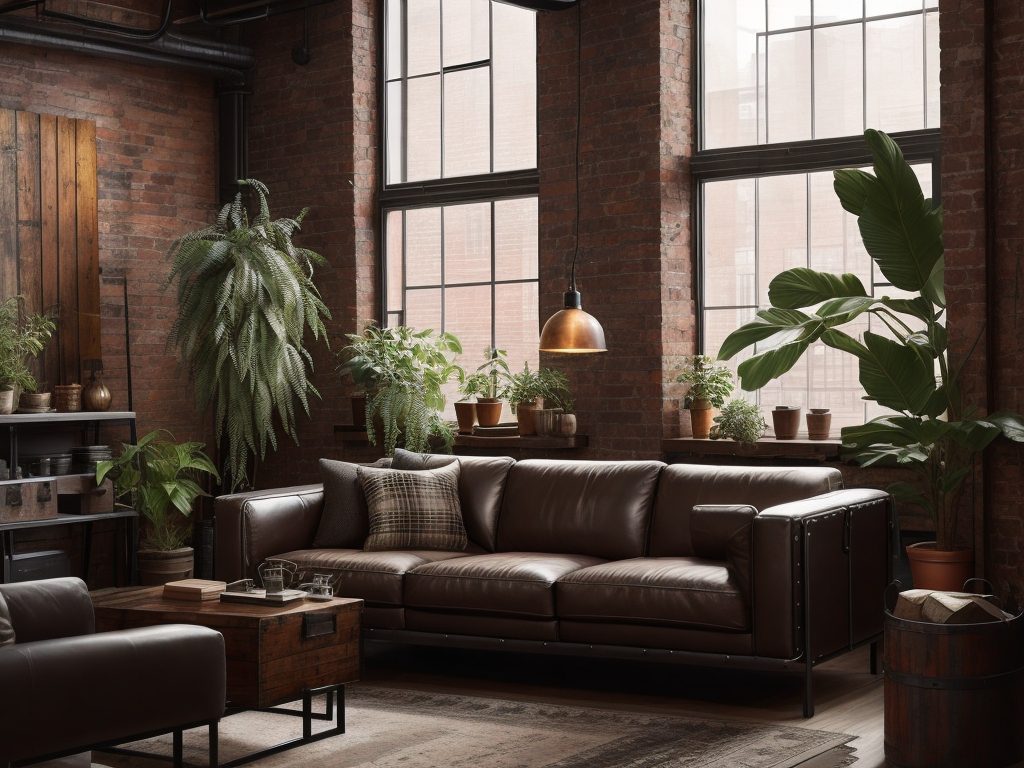Industrial Furniture
The Rise of Industrial Furniture: A Fusion of Functionality and Aesthetics
Industrial furniture, characterized by its raw beauty and functional design, has experienced a remarkable resurgence in popularity. This unique style fuses the rugged charm of industrial elements with the practicality and durability demanded by modern living spaces. As we delve into the historical background and explore the key characteristics and pieces of industrial furniture, we will witness its seamless integration into contemporary interior design trends. Whether you’re an avid DIY enthusiast or prefer store-bought options, caring for industrial furniture is essential to maintain its allure and longevity. Moreover, we’ll look into the future of this design trend, considering technological innovations and forecasted design shifts. Embrace the allure of industrial aesthetics and bring a touch of urban charm to your living space with industrial furniture.
Table of Contents
I. Definition of Industrial Furniture
Industrial furniture, at its core, embodies a fusion of form and function, drawing inspiration from the utilitarian pieces used in factories during the 19th century. It embraces the imperfections and raw textures of materials like reclaimed wood, metal, and concrete. By prominently featuring exposed hardware, such as visible bolts and nuts, industrial furniture exudes an authentic and utilitarian appeal. The hallmark of this design style lies in its minimalistic and uncluttered aesthetics, which aligns with contemporary design sensibilities.
II. Historical Background of Industrial Furniture
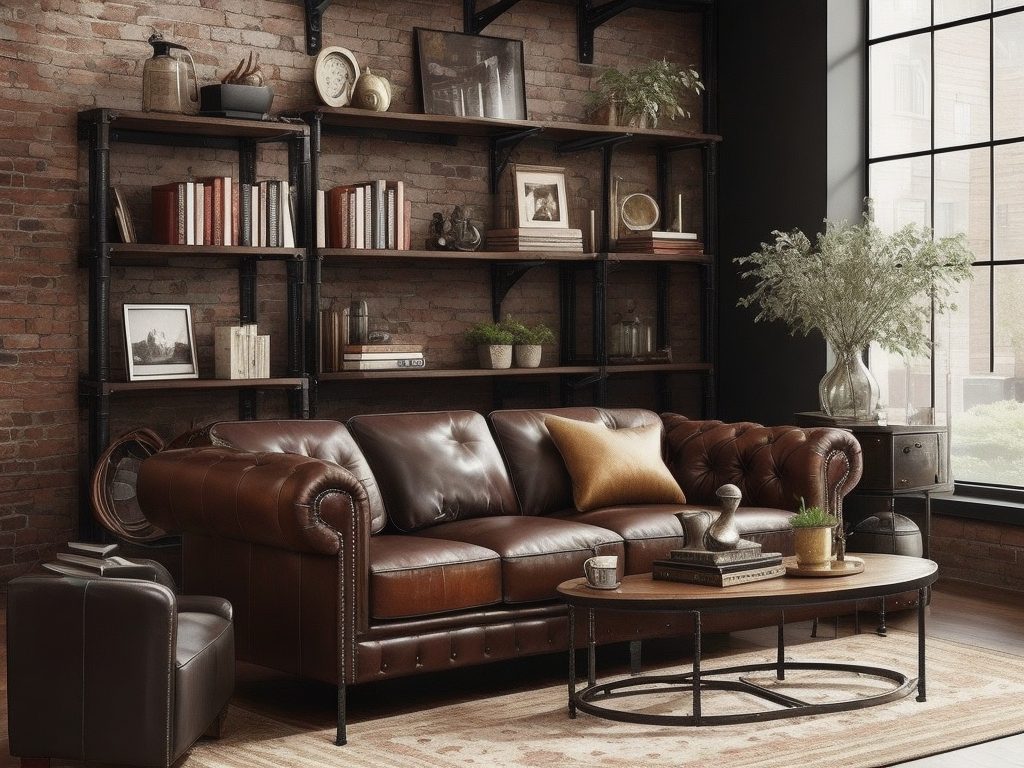
To understand the allure of industrial furniture, it is essential to explore its historical roots. The style first emerged during the Industrial Revolution when factory owners sought sturdy, practical, and cost-effective furniture for their industrial spaces. Over time, these functional pieces evolved into sought-after designs for both residential and commercial use. As urbanization and modernization accelerated, industrial furniture became a symbol of the rise of urban aesthetics, making its way into loft apartments, trendy cafes, and eclectic living spaces.
III. Characteristics of Industrial Furniture
A. Raw Materials and Textures
One of the most defining features of industrial furniture is its use of raw materials and distinctive textures. The choice of materials plays a crucial role in capturing the essence of industrial design, and this style often incorporates elements that highlight the natural beauty of imperfections. Reclaimed wood, salvaged from old buildings or discarded structures, takes center stage in many industrial pieces. The weathered and worn appearance of reclaimed wood adds a sense of history and character to the furniture, infusing each piece with a unique story.
Alongside reclaimed wood, metals like iron, steel, and aluminum are key components in industrial furniture. Metal frames, often left with their raw and untreated finishes, contribute to the rugged and urban appeal of the pieces. The smooth, cool touch of metal beautifully complements the warmth of wood, creating a visually striking contrast.
Concrete is another material commonly used in industrial furniture, particularly for tabletops or surfaces. Its cool and minimalist appearance adds an edgy element to the design while further emphasizing industrial aesthetics. The combination of these raw materials creates an inviting atmosphere that evokes the charm of industrial spaces from bygone eras.
B. Minimalism and Simplicity
At its core, industrial furniture embraces the principles of minimalism and simplicity. Each piece is carefully crafted with clean lines and straightforward designs, allowing the raw materials and exposed components to take the spotlight. The focus on functionality and practicality means that unnecessary embellishments are eschewed, resulting in a sleek and uncluttered look.
The minimalist approach of industrial furniture extends beyond the pieces themselves and often influences the overall design of a space. When combined with a minimalist interior design theme, industrial furniture creates a harmonious balance that exudes elegance and simplicity.
C. Exposed Hardware and Functional Components
One of the most captivating aspects of industrial furniture is its celebration of functional components and exposed hardware. Instead of hiding screws, bolts, and nuts, these elements are embraced and prominently displayed. This not only adds an industrial and utilitarian aesthetic but also serves as a testament to the furniture’s structural integrity.
Exposed hardware is often left untreated or finished in a way that complements the overall design, enhancing the industrial look. The industrial trend extends to drawer pulls, handles, and hinges, which are chosen to further accentuate the piece’s character.
This emphasis on visible hardware serves both an aesthetic and functional purpose. Beyond their visual appeal, these components ensure that the furniture is sturdy and durable, aligning perfectly with the industrial roots that originated from the need for robust and reliable pieces in factories and warehouses.
Overall, the characteristics of industrial furniture combine to create an enchanting design style that continues to captivate interior designers, homeowners, and enthusiasts alike. The raw beauty of reclaimed wood, the striking contrast of metals, the understated elegance of minimalist designs, and the utilitarian charm of exposed hardware all come together in harmony. Industrial furniture not only adds a touch of urban nostalgia but also brings functionality and durability to contemporary living spaces.
IV. Key Pieces of Industrial Furniture
A. Industrial Dining Tables and Chairs
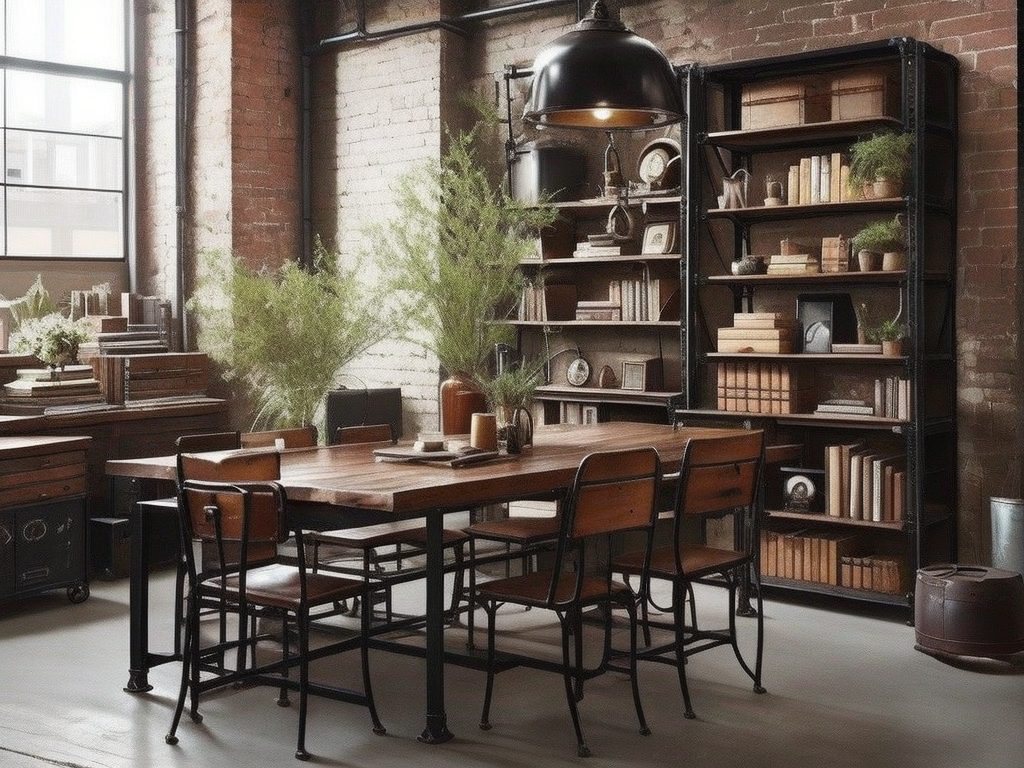
Industrial dining sets are iconic pieces that epitomize the perfect blend of style and functionality. The centerpiece of any dining room, the industrial dining table, features a robust metal frame supporting a striking reclaimed wood tabletop. The combination of these raw materials creates a captivating focal point, drawing attention to the table’s unique texture and natural imperfections.
Complementing the dining table, industrial dining chairs are designed for both comfort and aesthetics. Typically featuring metal frames and either wooden or leather seats, these chairs exude a rustic charm that adds character to the dining area. The industrial dining set not only serves as a gathering space for family and friends but also adds a touch of urban chic to the dining experience.
B. Industrial Desks and Office Furniture

In contemporary workspaces, industrial-style desks and office furniture have become increasingly popular choices. The industrial desk, often featuring a metal frame and a wooden or concrete top, offers a sleek and stylish workspace that fosters productivity and creativity. The minimalist design allows ample room for laptops, documents, and other office essentials, while the exposed metal components add an industrial edge to the workspace.
Industrial office furniture goes beyond desks and includes storage solutions like filing cabinets and shelving units. These pieces incorporate the same raw materials and exposed hardware, providing practicality without compromising on style. An industrial-themed office sets the stage for a productive and inspiring work environment, marrying utilitarian functionality with aesthetics.
C. Industrial Lighting Fixtures
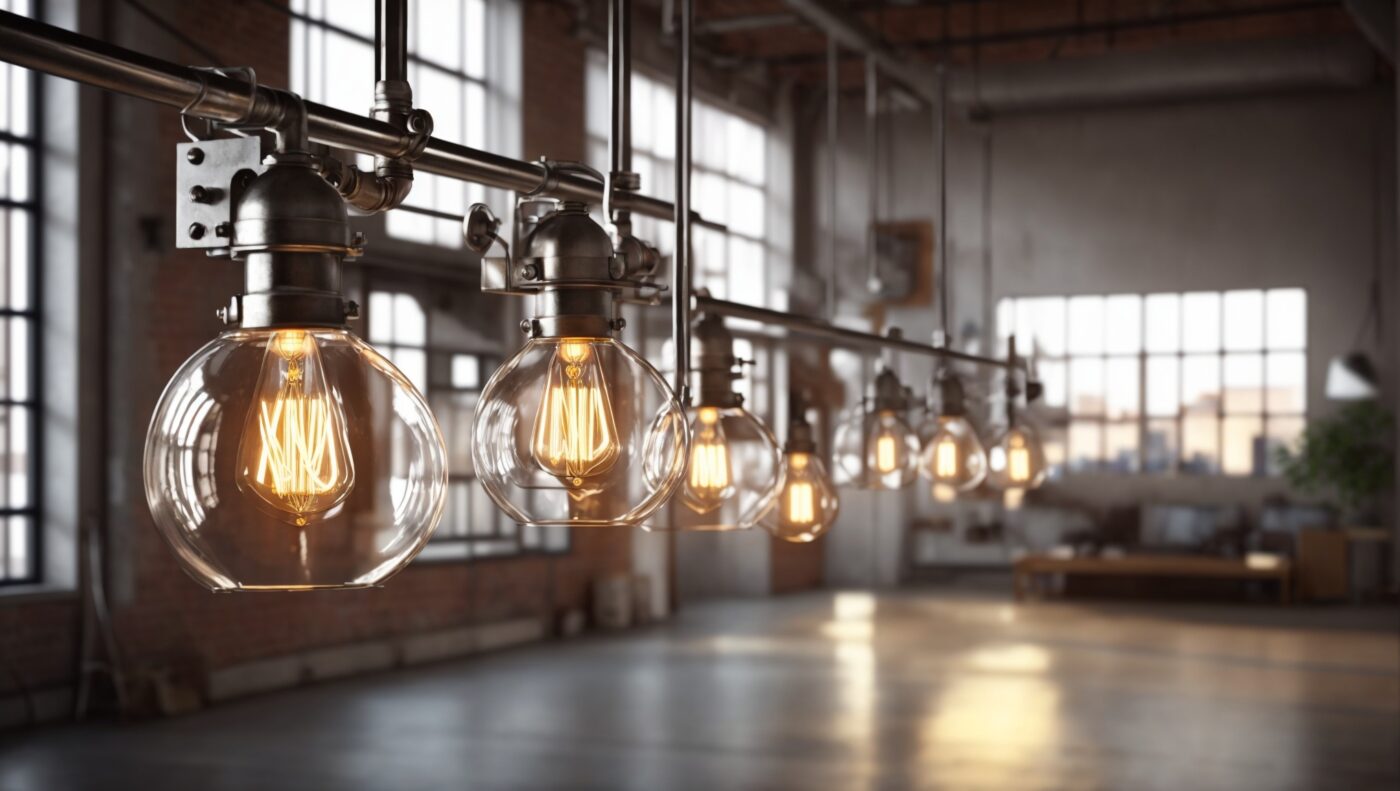
Lighting plays a pivotal role in setting the ambiance of any space, and industrial-inspired lighting fixtures are no exception. Pendant lights with metal shades, reminiscent of vintage factory lighting, hang gracefully over dining tables or kitchen islands, adding a touch of nostalgia and charm. These pendant lights often feature exposed bulbs that emit a warm, inviting glow, creating an intimate atmosphere.
For living areas, industrial floor lamps offer both illumination and design impact. With metal frames and adjustable features, these floor lamps bring a contemporary twist to the industrial theme. Wall sconces, another popular industrial lighting choice, not only provide accent lighting but also showcase the raw beauty of the materials.
D. Industrial Shelving Units and Bookcases
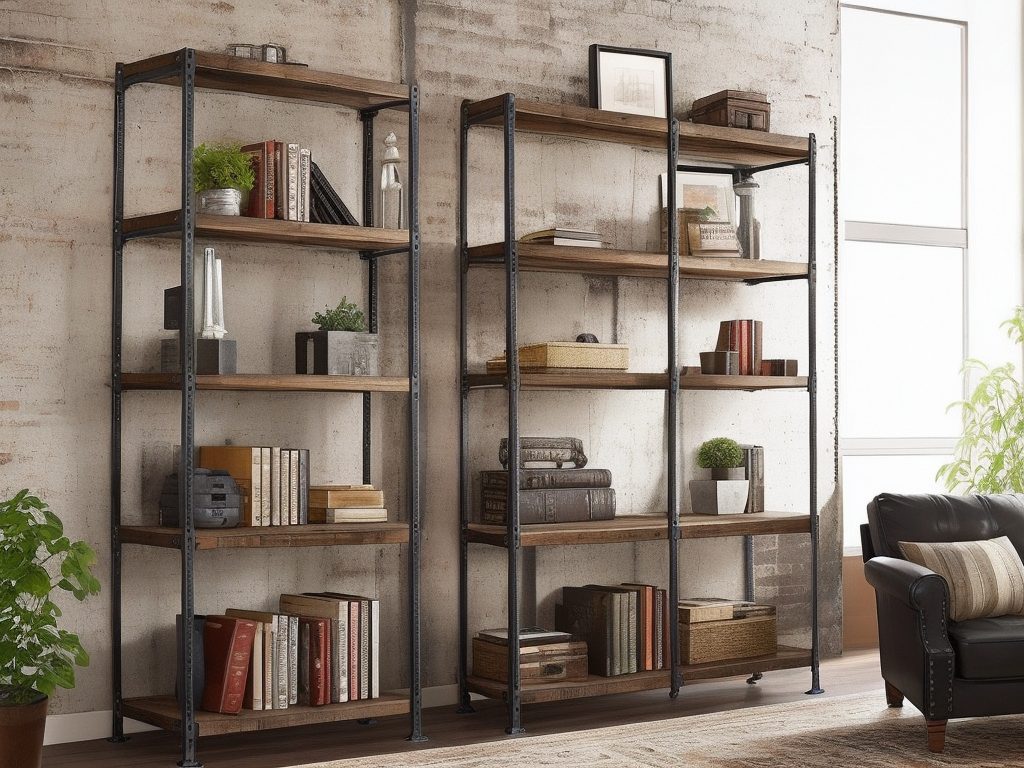
Industrial shelving units and bookcases serve as functional storage solutions while making a bold design statement. The combination of metal frames and wooden shelves provides an ideal balance between industrial ruggedness and rustic warmth. These pieces offer ample space for displaying cherished items, books, and decorative objects while adding an urban-industrial edge to the room.
In addition to the living room and study, industrial bookcases are increasingly sought after for stylishly organized spaces like home offices, bedrooms, and even bathrooms. The versatility of these shelving units allows them to seamlessly blend into various design themes, becoming focal points that elevate the overall aesthetics.
Overall, key pieces of industrial furniture embody the charm and character of this enduring design style. From the welcoming allure of industrial dining sets to the functional elegance of industrial office furniture, each piece delivers a harmonious fusion of form and function. Industrial furniture showcases the beauty of raw materials, the appeal of minimalism, and the fascination with exposed hardware, making it an ever-popular choice for those seeking a distinctive and timeless aesthetic.
V. The Appeal of Industrial Furniture in Modern Interior Design
A. Embracing Urban Aesthetics
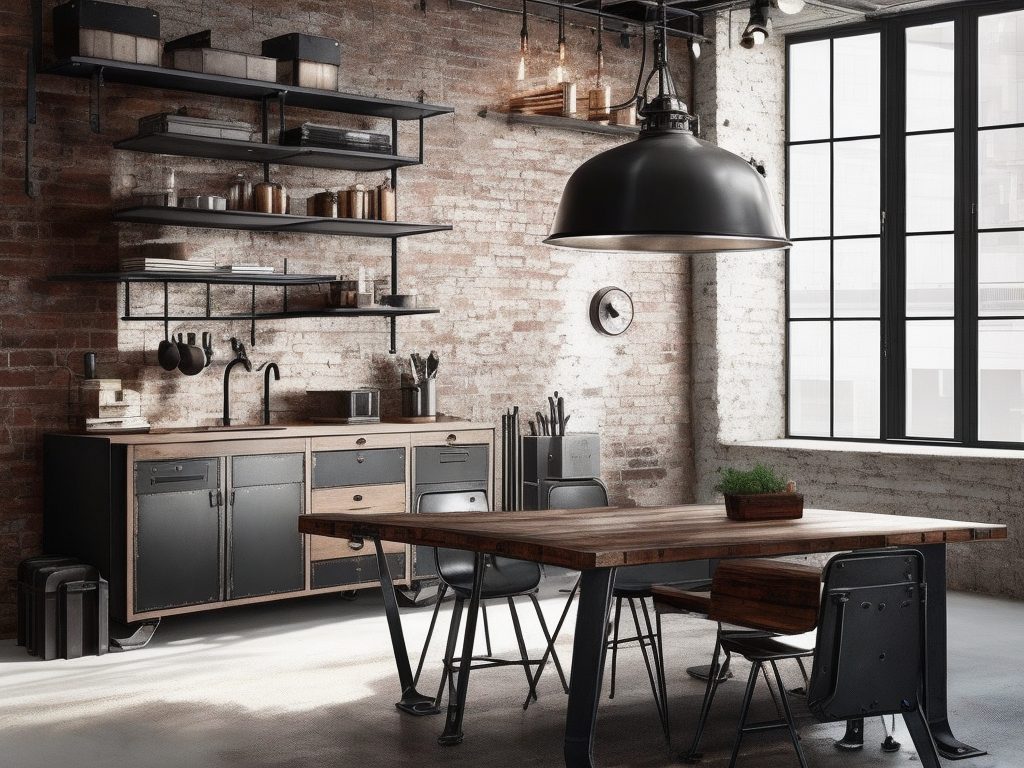
The resurgence of industrial furniture in modern interior design is fueled by its captivating ability to embrace urban aesthetics. As more people gravitate towards urban living and contemporary spaces, the industrial style serves as a nostalgic nod to the industrial era while seamlessly blending with modern sensibilities. The fusion of raw materials, such as weathered wood and exposed metal, resonates with the bustling energy of city life, infusing living spaces with a sense of urban sophistication.
In loft apartments and converted industrial spaces, industrial furniture takes on a special significance, paying homage to the building’s history while creating a stylish and functional interior. The distinct charm of these pieces lies in their ability to evoke memories of warehouses, factories, and workshops from the past, making them a conversation piece and a design statement in their own right.
B. Versatility in Design Themes
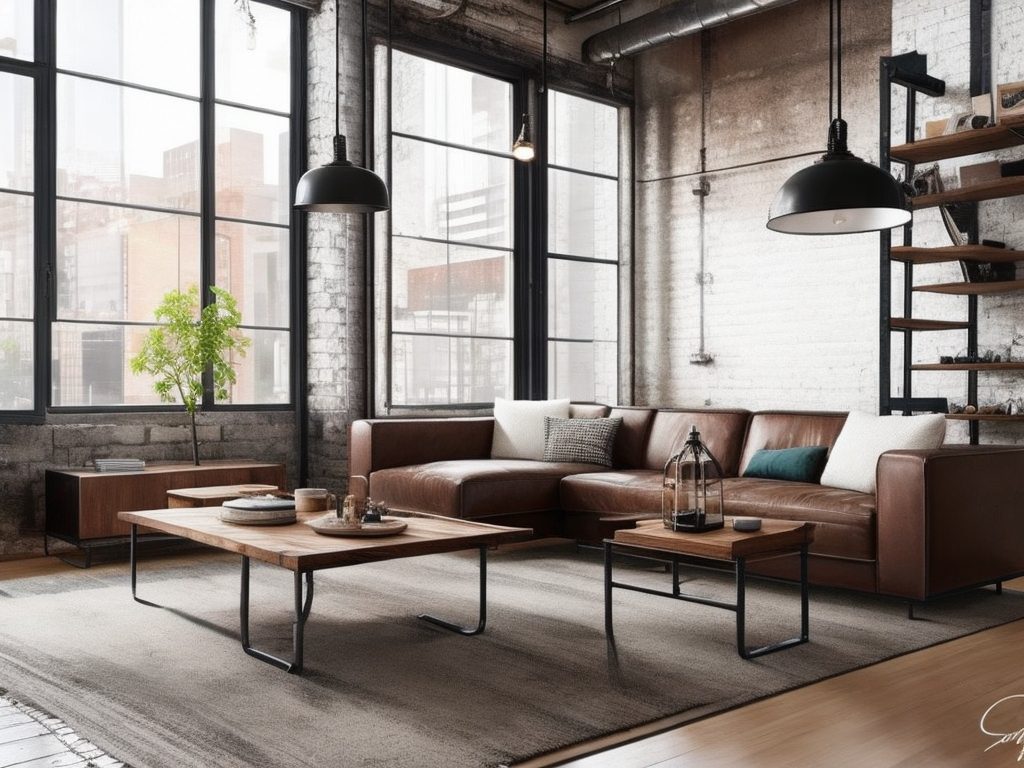
One of the most enticing features of industrial furniture is its remarkable versatility in accommodating various design themes. While the style naturally complements urban and loft-inspired interiors, it also effortlessly blends with rustic, farmhouse, and even minimalist design themes. The understated elegance of industrial furniture allows it to play a supporting role in diverse interior settings, adding character and a touch of uniqueness without overwhelming the overall design.
For those who appreciate the fusion of styles, industrial furniture offers a canvas for creative expression. By pairing industrial pieces with vintage accents or eclectic decor, homeowners can curate an interior that is uniquely theirs. The seamless integration of industrial furniture into different design themes makes it a go-to choice for both interior designers and DIY enthusiasts looking to create visually captivating spaces.
C. Sustainable and Eco-Friendly Elements
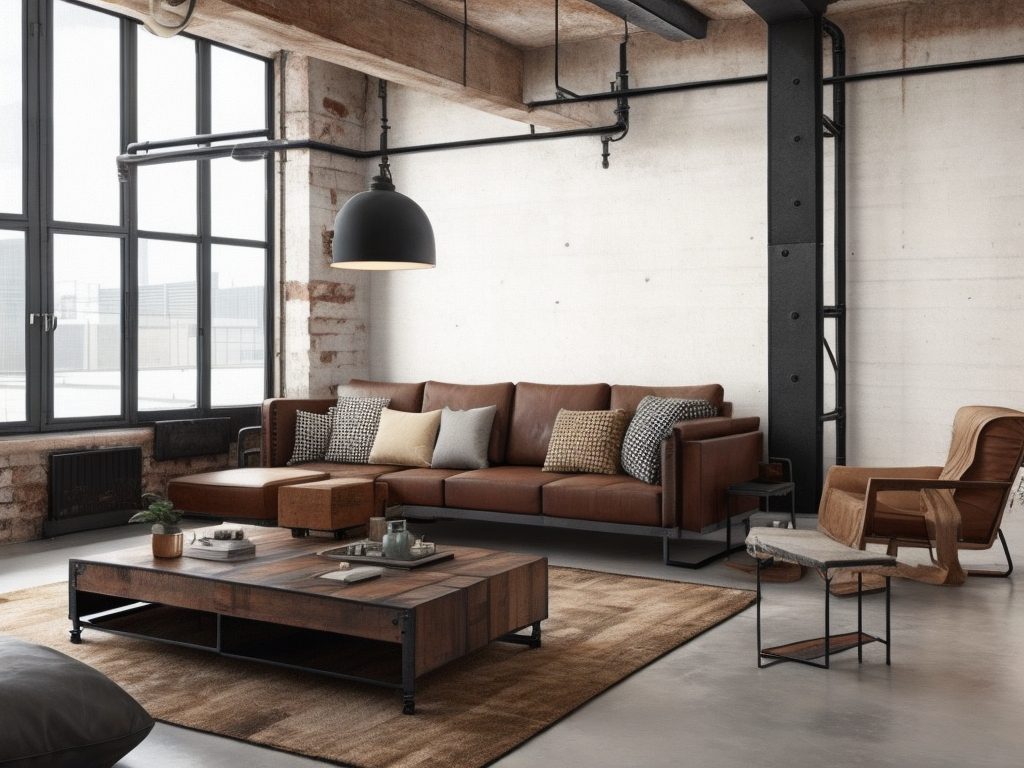
As environmental consciousness continues to influence consumer choices, industrial furniture‘s commitment to sustainability and eco-friendliness holds a significant appeal. The use of reclaimed wood in the construction of industrial pieces breathes new life into old materials, reducing the demand for fresh timber and lowering the carbon footprint.
Moreover, industrial furniture’s emphasis on functionality and durability aligns with the principles of sustainability. By investing in well-crafted pieces built to withstand the test of time, homeowners contribute to a more sustainable approach to consumerism. Unlike short-lived trendy furniture, industrial pieces maintain their allure over the years, allowing for effortless integration into changing interior design styles.
D. Creating a Timeless and Sophisticated Ambiance
Industrial furniture‘s ability to evoke a sense of history and timelessness is one of its most compelling features. The rugged charm of reclaimed wood and the industrial allure of metal components form an elegant blend that transcends fleeting design trends. This enduring appeal makes industrial furniture an investment, as it continues to resonate with homeowners regardless of fads.
By introducing industrial elements into living spaces, homeowners can create an atmosphere of sophistication and authenticity. The simplicity and raw beauty of industrial furniture evoke a sense of understated elegance that adds a unique touch to any room. Whether it’s a statement industrial dining table, a rustic bookshelf, or an industrial desk, these pieces contribute to a home’s timeless allure, providing a visual narrative that captivates both residents and visitors alike.
VI. Industrial Furniture: DIY vs. Store-Bought
A. Pros and Cons of DIY Industrial Furniture
DIY projects offer a creative and cost-effective way to bring industrial furniture into your home. Engaging in hands-on craftsmanship allows for personalized designs tailored to your space. However, DIY projects may require more time, skill, and effort, and the result may not always match the quality and durability of store-bought options.
B. Advantages and Limitations of Store-Bought Industrial Furniture
Store-bought industrial furniture provides a convenient and hassle-free solution, offering a wide range of designs and finishes to choose from. Reputable manufacturers ensure high-quality construction and durability, backed by warranties. However, store-bought options may be more expensive than DIY alternatives, limiting customization options.
VII. Caring for Industrial Furniture
A. Cleaning and Maintenance Tips
Proper care is essential to maintain the allure and longevity of industrial furniture. Regularly clean surfaces with a soft cloth or microfiber duster to remove dust and debris. For wood surfaces, use furniture polish or beeswax to retain the luster and protect against moisture. For metal components, wipe with a damp cloth and mild detergent to prevent corrosion.
B. Preventing Wear and Tear
To prevent wear and tear, avoid placing heavy or sharp objects directly on the furniture’s surface. Use coasters, placemats, and felt pads under decorative items and tableware to protect against scratches and stains. Regularly check and tighten exposed hardware to ensure stability.
VIII. The Future of Industrial Furniture
A. Technological Innovations in Industrial Design
As technology advances, we can expect to see innovative industrial designs that incorporate smart features and sustainable materials. From adjustable-height industrial desks to energy-efficient lighting solutions, these innovations will enhance the functionality and eco-friendliness of industrial furniture.
B. Forecasting Design Trends
Design trends are ever-evolving, and industrial furniture is likely to evolve as well. We may see more experimentation with new materials, colors, and finishes while maintaining the core industrial aesthetic that appeals to design enthusiasts.
Conclusion: Embracing the Timeless Allure of Industrial Furniture
Industrial furniture‘s enduring appeal lies in its ability to transcend time and design trends. By embracing the rustic beauty of raw materials and the functionality of industrial elements, it continues to captivate homeowners, designers, and architects alike. As you adorn your living spaces with industrial pieces, you invite an urban charm that resonates with the rich history of industrialization while embracing the modern demands of contemporary living.
FAQs
- Can industrial furniture be incorporated into a minimalist interior? Absolutely! Industrial furniture’s clean lines and uncluttered design make it an ideal fit for minimalist interior themes. Its simplicity complements the minimalist aesthetic, creating a harmonious and balanced space.
- How do I create an industrial-themed living room without overpowering the space? To achieve a balanced industrial-themed living room, opt for a few statement pieces, such as an industrial coffee table or a distressed leather sofa. Balance the ruggedness with softer elements like cozy rugs, plush cushions, and neutral-toned curtains.
- Is industrial furniture suitable for outdoor use? While industrial furniture is primarily designed for indoor spaces, some pieces, particularly those made with weather-resistant materials like metal and treated wood, can be suitable for outdoor use. However, it’s essential to check the manufacturer’s recommendations and provide appropriate protection from the elements.
- Can I mix industrial furniture with other design styles? Yes, industrial furniture blends remarkably well with various design styles. For instance, it can be combined with mid-century modern elements for a retro-industrial look or paired with rustic decor for an industrial farmhouse vibe. The key is to strike a balance and create a cohesive visual flow within the space.
- What are the best color schemes to complement industrial furniture? Neutral color palettes, such as shades of gray, beige, and earth tones, work exceptionally well with industrial furniture. These colors enhance the raw textures of materials like metal and wood, creating a warm and inviting atmosphere while allowing the furniture to take center stage.

